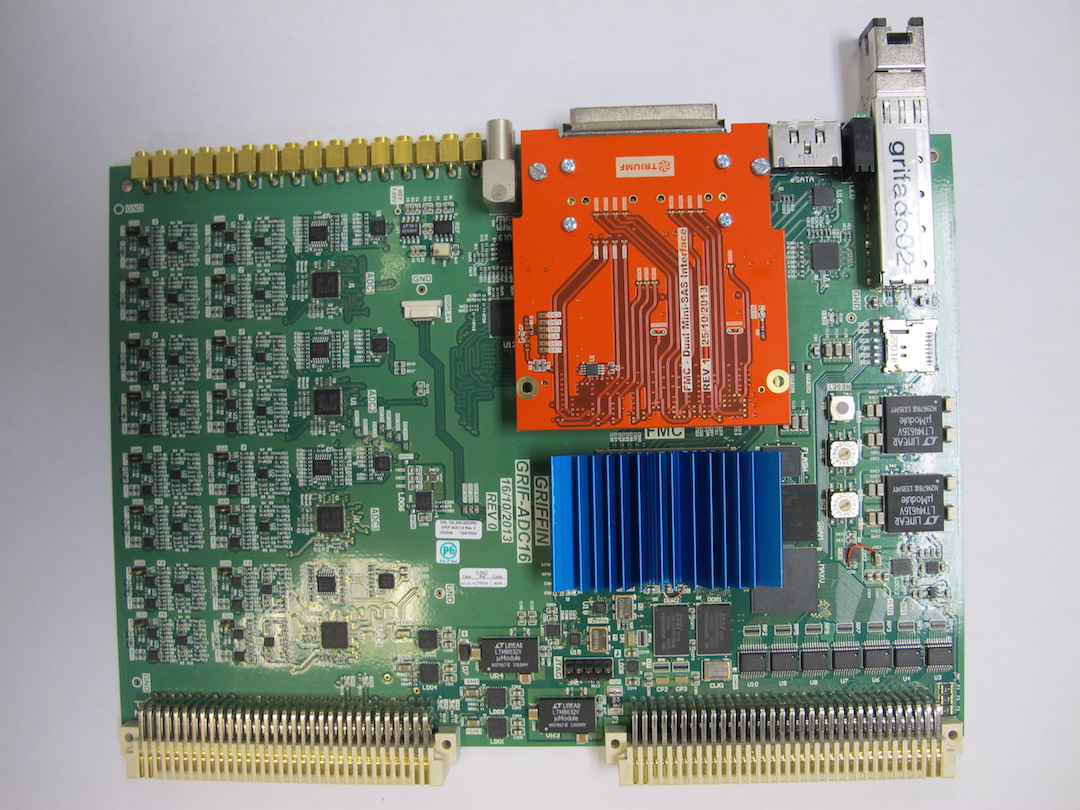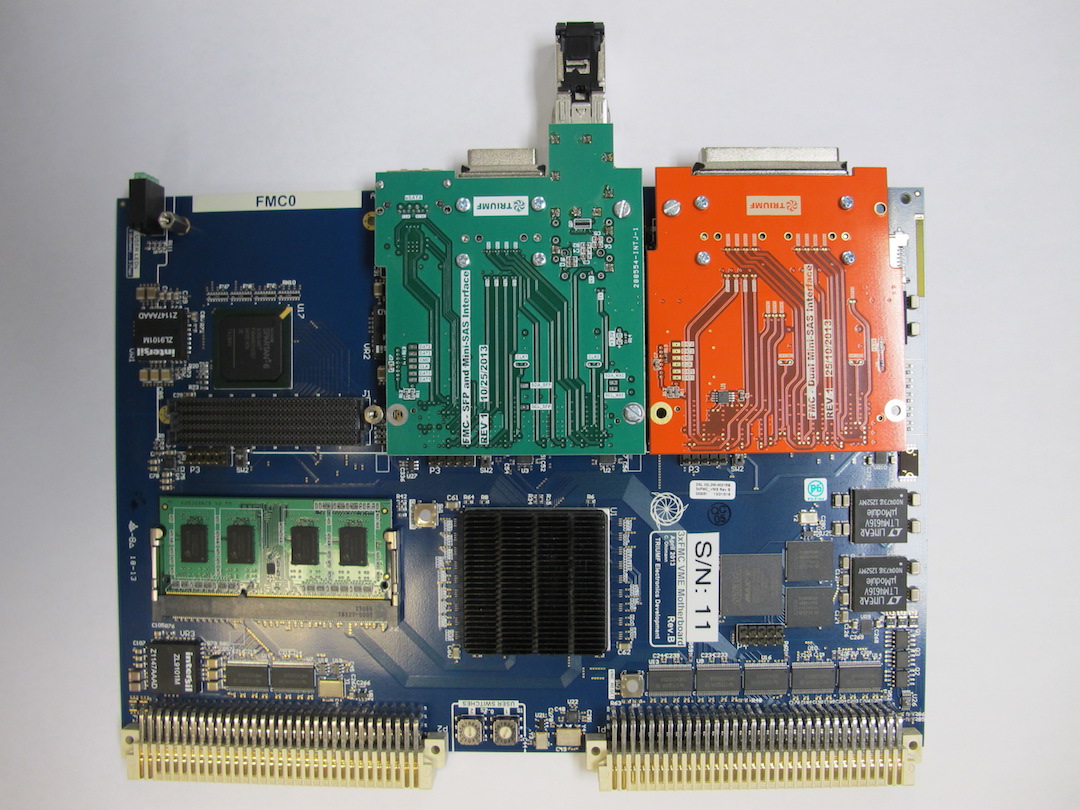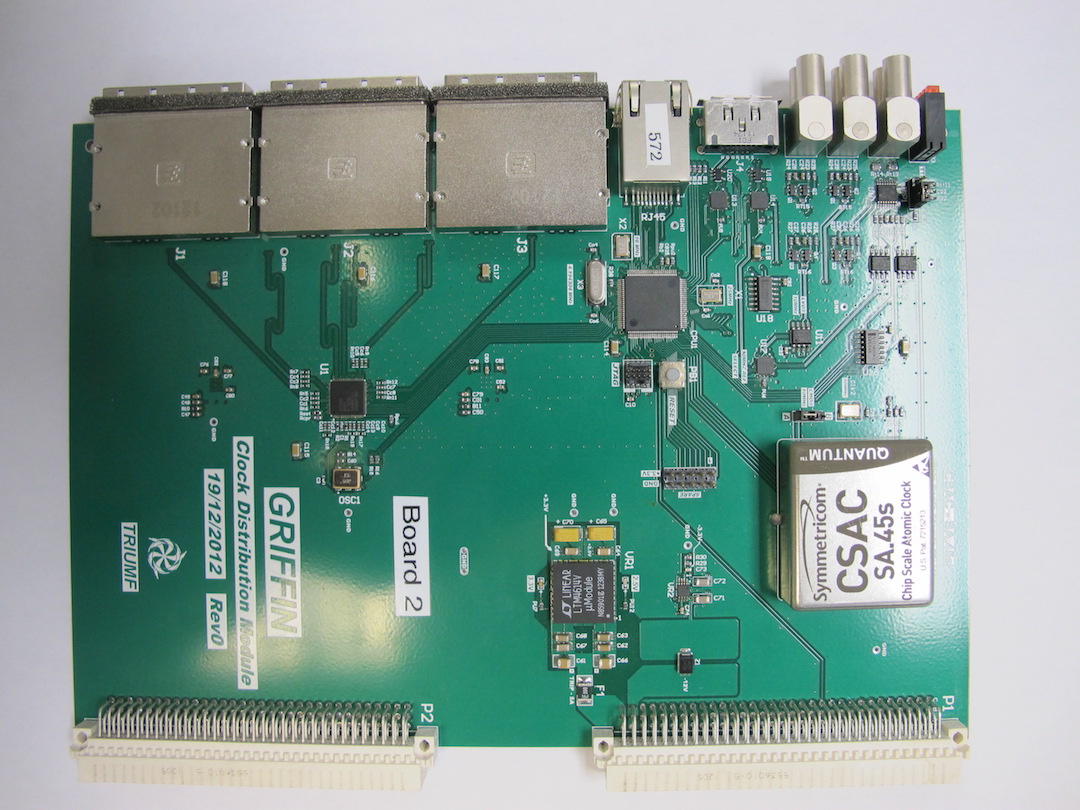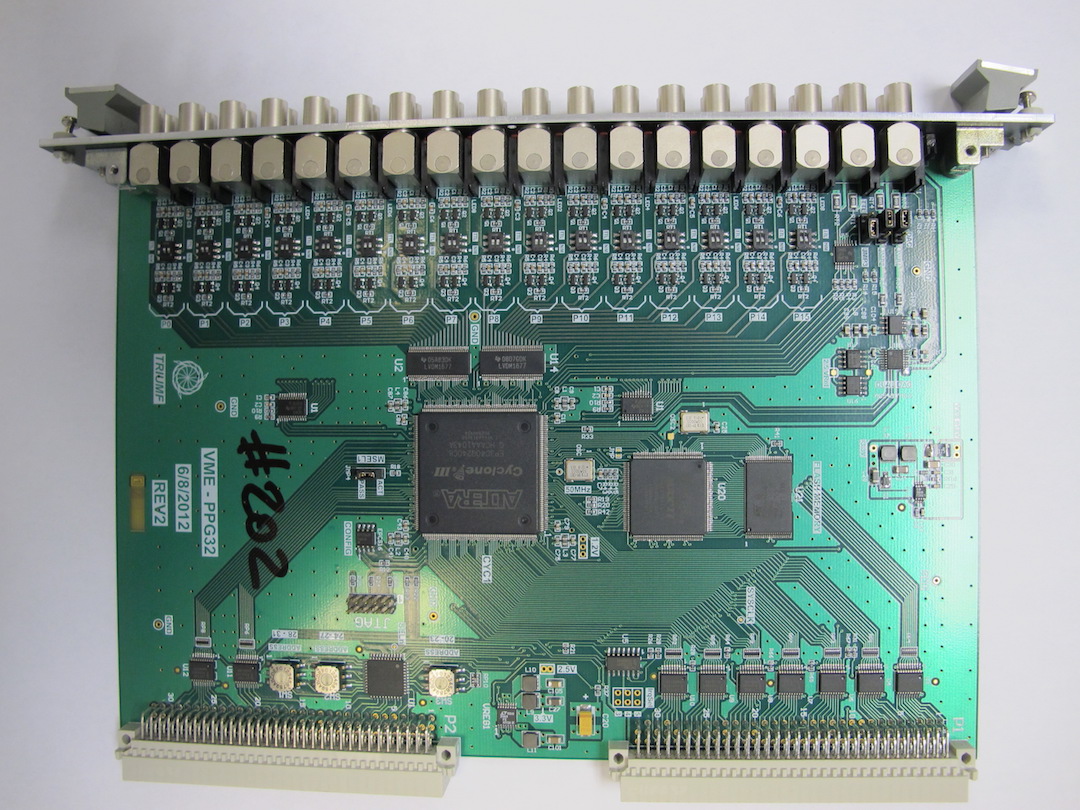Data Acquisition
GRIFFIN is instrumented with a custom-designed state-of-the-art digital data acquisition system. The project pushes the capabilities of modern digital electronics technology to achieve sustained data through-put of 300 Mb per second, maximizing the capabilities of the spectrometer. At the same time, with minimal parameter modifications, the DAQ can perform precision measurements with an uncertainty level of less than 0.05%.
GRIF-16 Digitizer
Digitization

A 16-channel, 14-bit, 100MHz sampling ADC module. The GRIF-16 is used to read the signals from the GRIFFIN HPGe detectors, SCEPTAR detectors, PACES detector.
GRIF-4G Digitizer
Fast Digitization

A 4-channel, 14-bit, 1GHz sampling ADC module. The GRIF-4G is used to read out the DESCANT and LaBr3 scintillator signals.
GRIFFIN Collectors
Assembly & Triggering

The collector modules are operated in two levels. The lower level collectors are connected directly to up to 16 digitizer modules to concentrate the data collected from them and pass them to the master collector module. The master level collector module is responsible for coordination of the experiment and runs the filter algorithm to determine what data is written to disk and what is rejected.
GRIFFIN Clock
Precision Timing

The GRIFFIN Clock (GRIF-CLK) modules generate and distribute the primary clock and syncronization signals for the entire GRIFFIN DAQ system. A single Primary GRIF-CLK module houses a chip-sized atomic clock (CSAC) which produces a precision 10MHz reference signal. The 10MHz primary clock signal is then fanned-out through secondary GRIF-CLK modules to all collecters and digitizers in the system.
GRIFFIN Programmable Pulse Generator
Experimental Control

The GRIFFIN Programmable Pulse Generator (GRIF-PPG) module generates NIM and TTL logic signals to be used as control signals for equipment. The cycling of the experiment (beam-on, beam-off, tape move and operation of the electrostatic beam kicker etc) is controlled by the primary GRIF-C module and when necessary the pattern of logic signals is output by the GRIF-PPG module.